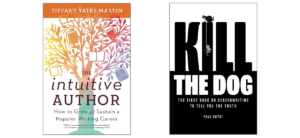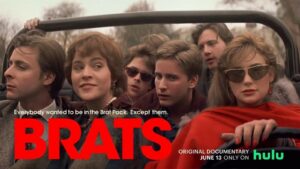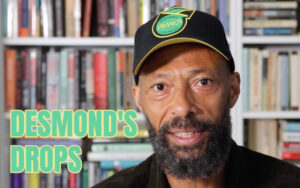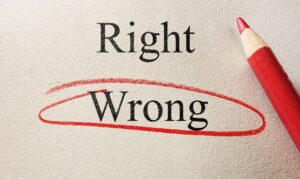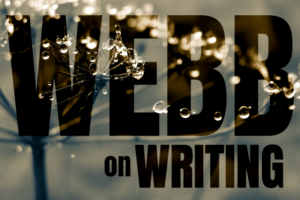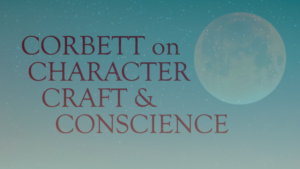Movie Talk
As a connoisseur of writing how-tos (and yes, I had to look up how to spell connoisseur – and okay, “addict” might be a more accurate word), I have read a TON of them. And while I find valuable nuggets in nearly all of these books, lately I’ve noticed that many recent writing how-tos are essentially sharing slightly different flavors of some very similar core information.
So when I encounter a book about writing that offers some new (to me, at least) ways of looking at the craft, I sit up and take notice. My gushing ode to Chuck Palahniuk’s Consider This in this 2020 post is an example.
I just finished reading another such departure from mainstream writing how-tos: The Intuitive Author, by WU’s own Tiffany Yates Martin, who, in addition to being a wonderful writer and editor, is also an insanely good teacher and public speaker. Seriously, if you ever have the opportunity to attend one of Tiffany’s sessions or events, take it. And if you’re an author who speaks at literary conferences, trust me: you do NOT want to follow Tiffany. She’s that good.
Having seen Tiffany’s amazing presentation on backstory at WU’s brilliant 2022 OnCon, I knew what an extraordinary editorial mind she has, and how good she is at getting under the hood to amp up and improve your writing at multiple levels. So with The Intuitive Author, I guess I was expecting a book full of deep analysis into the mechanics of writing, along with some sophisticated editorial techniques. Instead, much of the analysis she offers in the book leans more towards the psychology and strategy involved in pursuing – and ideally, enjoying – the life of a writer.
I quickly realized I was not reading The Average Writing How-To, and I dove into the book with my curiosity piqued. (And yes, I had to double-check whether it was “piqued” or “peaked.” Got it right the first time – yay! Hey, it’s the small victories. But I digress…)
In short, The Intuitive Author is filled with insights and perspectives quite unlike those offered in the vast majority of writing how-tos currently on the market. And reading Tiffany’s book made me think about another writing how-to I’d recently read that takes a pretty big departure from most conventional writing wisdom: the provocatively titled Kill the Dog: The First Book on Screenwriting to Tell You the Truth, by author and screenwriter Paul Guyot.
What does this Guyot dude have against dogs, anyway?
Nothing, actually. Instead, the animal Guyot truly hates – and is taking a not-at-all thinly veiled swipe at – is the cat. Specifically, the cat in the well-known “Save the Cat!” series created by the late Blake Snyder.
If you’re not familiar, Snyder’s initial Save the Cat! book (STC to the cool kids) burst onto the scene in 2005 with a VERY structured set of templates for storytelling, which he reverse-engineered from studying many successful movie scripts. Targeted at aspiring screenwriters, Snyder’s methodology offered a compelling framework for them to adopt […]
Read MoreTherese here to introduce you to someone near and dear to me: my son, Liam. ❤️
Liam’s screenwriting journey started as a Rod Serling fan. Inspired by Serling’s allegorical storytelling, he attended USC’s film school where his thesis film, You Missed a Spot, was selected in over 30 festivals internationally. Since then, he has worked on the production-side of the industry, most recently wrapping as the line producer’s assistant on FX’s Mayans MC.
You may have heard about the downturn of work in Hollywood, and so Liam has bided his time between jobs doing something he was likely, inevitably, genetically born to do: WRITE. That the short story he’s written, that he’s now determined to see produced (see Kickstarter), taps into a real-life wound should come as no surprise to you, WU community.
But I’ll let Liam tell you about that, WU-style. Take it away, kiddo.
As writers, we often face the challenge of crafting stories that feel authentic, especially when venturing into experiences we haven’t lived ourselves. This was the case for me when I set out to write my new short film, Venus in Furs, a psychological thriller that personifies heroin as a woman.
I’m a filmmaker living in Los Angeles, and my life was deeply impacted when one of my close friends from film school overdosed on drugs laced with the powerful synthetic opioid, fentanyl. I remember the first time I met him—we were attending a mandatory lecture on the cinema and music of the 1960s. We were sitting on either side of another student we both had a crush on and got into a pointless debate about The Doors, as if this poor girl remotely cared about some band from five decades ago. He demolished me in the debate. The guy was like Jim Morrison himself—long-haired, charismatic as hell, with a ribcage you could practically see through his t-shirt.
After the girl successfully escaped, the two of us grabbed lunch and admitted we were only trying to impress her. Instant friendship.
During lunch, our conversation abruptly ended when he mentioned he was going to leave to smoke some opium. I assumed he was joking at the time—I mean, I had just met the guy. What, opium? You mean that shit from the 1800s? But over time, I came to learn that he was affected by a powerful addiction that, to him, wasn’t some unshakable affliction as often depicted, but rather the means to radically take hold of his post-high-school freedom and live out the fantasy of the rock ’n’ roll lifestyle he so loved.
The last time I saw him, I visited his three-bedroom high-rise in Downtown Los Angeles, full of vintage records and a collection of Les Pauls paid for with credit cards he couldn’t pay off. It was the Fourth of July, and he was excited to launch fireworks at passing cars. At that point, I had witnessed the drug obliterate his ambitions. He had stopped attending classes, gained weight, and lost that magic spark that drew me to him in the first place. Heroin took everything from him. And yet he was so happy to participate in his own self destruction. In fact, sitting there with all his guitars and […]
Read More
In 2016, when the film Manchester by the Sea was released, I went to see it with a friend. The movie, directed by Kenneth Lonergan, tells the story of a reclusive, down-and-out janitor, played by Casey Affleck, who has lost his children in a house fire caused by his own negligence. Depressed and antisocial, he’s forced back into the land of the living after the sudden death of his brother, when he becomes the legal guardian of his teenage nephew.
Although the movie was sad, it spoke volumes about our ability as individuals to overcome almost unbearable circumstances, grounding and humanizing the sort of horrendous catastrophe that is all too often politicized or used to boost ratings by the mainstream media.
As my friend and I were walking out to the car after the movie, my friend said, “If I’d known how depressing that was going to be, I would have stayed home.”
I didn’t mention it at the time, but I loved Manchester by the Sea. I wasn’t the only one. The film was nominated for six Academy Awards and won two: Best Actor and Best Screen Play.
In Poetics, Aristotle’s famous essay on Greek drama, he wrote that the purpose of tragedy is to “arouse sensations of pity and fear, and to purge [the audience] of these emotions so that they leave the theater feeling cleansed and uplifted, with a heightened understanding of the ways of gods and men.”
Anyone who enjoys listening to the blues knows how this works. It’s also the reason that some of the most revered and beloved works of literature in the English language are tragedies.
Because they offer insight into the human condition, often exhibit circumstances that foster societal plight, and promote critical thinking, tragedies were once standard curriculum in high school and college English classes.
In the late 1980s, when I was in high school, we read Shakespeare’s Othello, Hamlet, Macbeth, and Julius Caesar.
As freshmen, we cringed and wrung our hands after learning the fate of Thomas Hardy’s Tess, the protagonist of his masterwork, Tess of the d’Urbervilles. Poor Tess never had much of a chance.
My sophomore year, we spent a week discussing the suicide of Willy Loman, the sad-sack anti-hero of Arthur Miller’s Death of a Salesman.
I’ll never be able to forget Melville’s luckless Billy Bud, hanged by his neck from the yardarm for a crime he didn’t commit, or the murder of Jay Gatsby, F. Scott Fitzgerald’s lovesick millionaire, shot to death in his own swimming pool.
These works of literature and others like them can be tough to get through. But, in my opinion at least, the cultural, ethical, and spiritual enlightenment tragedies offer outweighs any emotional burden they might impart.
And yet, sometime over the last thirty or so years, tragedies fell out of favor. Novels like Of Mice and Men and The Scarlet Letter make up a large percentage of the books that have been banned in certain parts of the country. Perhaps this is a result of the general backlash against anything even remotely intellectual that’s run rampant in the U.S. for the past few decades, […]
Read MoreCredit: ABC Studios
My fellow writers, we need to talk about the new documentary by Andrew McCarthy, BRATS. It’s not just a nostalgia trip. It’s about criticism and rejection and survival as artists.
The film is instructive because it’s not about how criticism landed on one person and their career. It’s a research study about how criticism affected a group of people, each reacting in their own way. This is what gives us options.
(It’s also about a writer with his own bruised ego. We’ll get to him later.)
Here’s the back story — a group of young actors were enjoying huge success when, as NPR puts it, “journalist David Blum wrote a story in 1985 for New York magazine titled ‘Hollywood’s Brat Pack,’ centered on time spent partying with Estevez, Lowe and Nelson, that cast shade on the group — lumping them together as unprofessional and over-privileged, while sticking them with a moniker which would follow them all around for decades.”
We follow McCarthy as he tracks down as many members of the so-called Brat Pack as possible to find out, thirty years later, how the nickname affected them, professionally and personally.
What might be astonishing for non-artists is how heavily being lumped into that group weighed on McCarthy, disastrous to his career and to him, personally. But this is not an unusual story for creatives. I see storylines like this—albeit not usually at this level of fame—and openness.
Let’s take a beat to be grateful for McCarthy here. One issue facing creatives is that so few people are willing to talk about failure, real or perceived, so our narratives are skewed and our models for how to deal with rejection and failure go missing.
As we move through the film, we watch McCarthy realize that his reaction was specific to him, and not a foregone conclusion.
There’s a slider scale, one might say, of reactions here. Rob Lowe and Demi Moore on one side, having forged on. Emilio Estevez and Allie Sheedy are somewhere in the middle, having struggled with the name in their own way.
But it would be a mistake to see McCarthy as sitting on the other extreme. We don’t hear from Molly Ringwald. Judd Nelson remains elusive. Anthony Michael Hall is never even mentioned by name. It’s possible that the hardest hit aren’t visible to us on the slider scale and that McCarthy sits dead center.
Meaning, McCarthy’s response, though he seems doomed in retrospect, was actually pretty damn healthy. He’s thoughtful, introspective—sober, alive—and seems to have a full, happy life. But he can’t help but look back.
And, for all of the buzz around mindset, this is such a fascinating deep dive.
Demi Moore emerges as a brilliant gift. It’s Moore who quickly breaks it down for McCarthy. The nickname had value because he gave it value. It became what he feared it was.
In an earlier segment, while talking to Sheedy, McCarthy talked about how, in his auditions, everything felt different. With Moore, he talks about his fear, before the article, that someone was always going to stab him in the back. With Estevez, he hints at his troubled relationship with his father, with whom he could never make things right, but, in the end, […]
Read MoreWelcome to a new edition of Desmond’s Drops!
This month, enjoy three drops focused on one topic–Blake Snyder’s SAVE THE CAT film genres and the three tenets associated with each of them, beginning with:
Though Blake came to these genres and tenets through a study of film, they’ve helped countless novelists to create more well-rounded stories–including Desmond himself. Blake’s story genres and what he’s identified as unique variables for each of them can help a storyteller realize essential missing pieces. (We can’t recommend Blake’s book, Save the Cat, highly enough.)
Email subscribers, please click directly to staging-writerunboxed.kinsta.cloud to view, or visit all of Demond’s Drops on YouTube.
Look for more of Desmond’s Drops in March!
Have your own bit of wisdom to share? Drop it in comments.
Read MoreIn the late ‘70s, when I was a freshman at Indiana University in Bloomington, Indiana, a film crew descended upon our quirky little town to shoot a movie. At the time I believe it was called “Bambino,” but that would change. The movie focused on an annual bicycle race the university hosted, called the Little 500 (a reference to the famed Indianapolis 500, the big annual auto race held 50 miles to the north). The Little 500 was the event of the year for students and townspeople alike, and to this day it draws crowds of 25,000 whenever April rolls around.
When you live in smalltown central Indiana, it’s not every day that Hollywood comes calling, and both the city and the university greeted the film project with open arms. It was the talk of the town, and soon we began seeing sections of the campus and surrounding area cordoned off while a cafeteria, courtyard or local street was commandeered to film some scene.
What was the movie about? Nobody really knew, other than that the climactic moment would be a reenactment of our big bicycle race. And – most thrilling of all – there was an open call to attend said reenactment as an extra, since they needed the stadium in which the race was held to be full of people. As a bonus, they also needed a ton of competitive bike riders, and since my dormitory floor had a team that had qualified to compete in the real race, the guys on that team were hired to ride in the reenactment, while the rest of their loyal floormates fake-cheered them on from the stands, hoping to be captured forever on film.
Suffice to say, we were stoked.
It didn’t take long for some of the novelty to wear off. The film crew seemed to be everywhere, and they showed no signs of ever being done. It became tiresome to have to walk around to a rear entrance of an academic hall, because the front of the building was being used for some scene they were shooting.
Even more troubling, we began to notice what they were getting WRONG. We heard talk that the movie would highlight rivalries between students and “cutters” – a derogatory name the filmmakers were using for the local townspeople, harkening back to a bygone era when Bloomington was home to a large workforce of limestone cutters. The problem was, the limestone quarries had been closed for years, there was little or no actual rivalry, and nobody called them “cutters.” “Townies,” maybe. A few called them “stonies” (for “stone cutters”). But what was all this “cutters” nonsense? No, this did NOT bode well.
And then there were the race scenes. Despite the initial surge of interest, it quickly became evident that there was no way to actually fill the stadium where the race was being filmed day after day, because nowhere near enough people were showing up. So the film crew would direct us (yes, yours truly was in some of the crowd scenes) to all shuffle back and forth to different parts of the stadium and sit together in crowded clumps of people. After one shot was completed, we would be ushered to some other section of the stands, and […]
Read MoreWelcome to a new edition of Desmond’s Drops!
This month, enjoy three drops focused on one topic–Robert McKee’s concept re: “The Limits of Human Experience.” How can you push your characters to their absolute limits? Learn more about a technique that McKee himself has said is underutilized–and that can make your story much stronger.
Email subscribers, please click directly to staging-writerunboxed.kinsta.cloud to view, or visit all of Demond’s Drops on YouTube.
Look for more of Desmond’s Drops in November!
Have your own bit of wisdom to share? Drop it in comments.
Read MoreThis past weekend I did something unusual, at least for me. Though given the blockbuster audience numbers, it was a rather typical decision. That is, I saw both Barbie and Oppenheimer on the big screen, diving headfirst into the summer cultural phenomenon known as Barbenheimer.
I don’t quite know what possessed me. It has been years, certainly pre-pandemic, since I attended an opening weekend premier, much less two. It may have been the surreal opposites the two projects represent. Perhaps the memes drew me in, or the appeal of a cool, dark cinema on a blistering summer day. Or maybe it was simply the call of story, the promise of two fresh visions to pique my interest and awaken my senses.
And wow, did they deliver! From the explosion of color in Barbie to the heart-shattering explosion at the center of Oppenheimer, both were the culmination of bold visions brilliantly executed. The films captivated, cajoled, and touched me, leaving my emotions a maelstrom in their wake. Shakespearean scholars would be pleased at the catharsis I experienced.
But here’s the thing. For all the massive sets, sweeping vistas, splashy dance numbers, and stellar casts, it was – as it always is – the root stories that transformed both from interesting premises to works of art.
In the days since, I’ve been pondering just why the writing touched me so. It wasn’t the plots. They were fine, of course, hitting all the marks. Oppenheimer had a few twists and a slow burn culminating in a searing finale. Barbie was satisfying too, though a bit predictable. Yet I was still moved from laughter to tears by the end. So, what was it? What sparked the magic?
The more I reflected, a key similarity between these two seemingly incompatible endeavors jumped out. In both cases, writers found the broader stories swirling around the main plot line – crucial cultural, social, and political currents – and employed them to shape not only events within the tale but also the emotional life of the characters. The alchemy was how they so deftly integrated these elements that they became indispensable to the tale.
How did they do it, and what lessons can we learn to elevate our own tales? Let’s take a peek at how both incorporated the larger story swirling around the main plot.
<spoiler warning – please do not proceed if you have a movie date on the near horizon>
Embedding the Big Issue within the Protagonist’s Journey
Oppenheimer anchors its epic story with a quote from Hindu scripture that the scientist once used himself when reflecting upon his dubious achievement – “Now I am become Death, the destroyer of worlds.” The line is spoken twice, once in a scene of personal passion and again at the moment civilization changes forever. And while the story winds in many directions, brimming with plots, subplots and more than a little subterfuge, the heart of Oppenheimer the man is weighted with the burden reflected in the evocative meditation. For it was his vision, intellect and leadership that birthed the nuclear age that shapes our modern world and yet might still destroy it; and he carries that burden with him. It struck me afterward that the story structure is like a distorted mirror. The events […]
Read MoreWelcome to a new edition of Desmond’s Drops!
This month, enjoy three drops focused on one topic–lessons for writers from the world of FILM.
Email subscribers, please click directly to staging-writerunboxed.kinsta.cloud to view or visit all of Demond’s Drops on YouTube.
Look for more of Desmond’s Drops in September!
Have your own bit of wisdom to share? Something you’ve learned from the world of films? Drop it in comments.
Read MoreThe past month, I’ve been in the throes of promoting my new novel, Strangers in the Night. The book is about Frank Sinatra and Ava Gardner, their wild and rocky relationship, the glamour and the underbelly of Old Hollywood, and the cost of celebrity. There’s so much more to it, too, but one aspect of writing this story really stood out to me as I waded deeply through my pile of research: the very real draw of toxic relationships. As things became more unwieldy between Frank and Ava, the more entranced I became. I simply couldn’t look away.
Recently I devoured Rachel Hawkin’s The Villa, set in a gorgeous Italian villa that has a past. It’s a story about two friends who are writers; one is world-famous and wealthy, the other is a stronger writer in her craft, but she can barely pay the rent. They go on a vacation together and each become inspired to write something new when they discover the story of a murder that took place in the villa where they’re staying. One friend steals pages from the other, and things begin to unravel from there. Toxic friendships at its finest. I also recently finished Andrea Bartz’s We Were Never Here, featuring a friendship maligned by jealousy and murder. More toxic friendships. The fantastic show, “Bad Sisters,” on Apple TV is about an Irish family of four sisters, three out of four whom despise their brother-in-law. He’s abusive and twisted and invades each member of the family’s lives in various ways to manipulate them—and winds up dead. (This isn’t a spoiler. At the beginning, you know someone has killed him and the show is about who did it told with loads of dark humor.) So many toxic relationships, familial, on the friend level, and also within a marriage.
What is it about toxic relationships that we find so appealing to read, or watch from the sidelines? (Certainly, no one wants to be in one!) They’re addictive, and this revelation made me think about what draws me in personally. I boiled it down to a few points.
1.) Fascination. I found the way Frank and Ava interacted on such an unhealthy level truly fascinating. How long would someone put up with fights, cheating, jealousy, and scandal before they called it quits? Would they grow from their failures? What would they learn about themselves in the process? These are a few of the questions that fascinated me. In “Bad Sisters,” I was riveted by the way the brother-in-law that the sisters hated would find ways to manipulate each of the family members, based on their weaknesses or the things they loved. This guy was really a sick individual and I couldn’t help but watch in fascination as he carefully took down each of the sisters in different ways.
2.) Sympathy. I felt for both Frank and Ava, as they struggled to do their best—and their worst—to corral their passions and achieve that intangible goal of loyalty and lasting love. Love may make everything better, but it also makes everything harder. This is a universal truth, and I couldn’t help but sympathize with them as they struggled to arrive at some comfortable happy medium. Plus, I could sympathize since I’ve had my own […]
Read MoreA dear friend of mine is having her name changed today. After her 20-year marriage ended in divorce a year ago, she decided to go back to using her maiden name, and today is her day in court, where she’s making the change both legal and official.
It is a powerful gesture, in multiple ways. It excises the ex-husband’s name from her life, but it does even more. My friend’s maiden name happens to be a beautiful and poetic word, literally a word that many people love and even celebrate. Her ex-husband’s surname? Spoken aloud, it sounds more like a cross between a rare skin disease and a Taco Bell appetizer. (Okay, I might be a little biased on that front; I was never fond of the man. But I digress…)
In preparing for today, my friend learned (as countless women have learned when either starting or ending a marriage) that the process of getting one’s name changed can be quite the hassle. But in her case, it’s totally worth it. For her, it simultaneously represents both a return to who she was, and a new beginning. In short, she knows something that I want to remind you of today:
There is power in names. And we as writers should try to leverage that power.
I see a lot of writers going with character names that are rather… generic, if I’m being honest. And while those names might tick off all the boxes for being realistic, believable, and/or even period-correct, I don’t think that playing it safe like that is always the most compelling approach. So today I want to look at the greater impact you can evoke by making bolder choices with your names. But being an open-minded guy who can usually see both sides of an issue, I’ll also offer a couple of examples where seemingly generic names were the perfect choice. But let’s start on the non-generic side of things…
The good, the bad and the ugly
Many authors take advantage of the fact that some names just inherently sound good or bad. Hang on – let me clarify. I’m not saying the actual name sounds good or bad; I’m saying it makes the character sound like a good or bad person. While this is particularly prevalent in fantasy and graphic novels, a good- or bad-sounding name can really help establish a reader’s perception of your character in any genre.
Some names that “bring the good” include Aragorn, Atticus Finch, Forrest Gump, Frodo Baggins, Hermione Granger, Holly Golightly, Jack Ryan, Joe Christmas, Huckleberry Finn, Nero Wolfe, Oliver Twist, and Phileas Fogg – I’m sure I’ll think of three dozen better examples the moment this post is published.
By contrast, some names immediately give you bad vibes, letting you know all is not right with this particular character. I’m writing this paragraph on Valentine’s Day, and I doubt that back in elementary school any of us would have wanted to receive a Valentine from a member of this motley crew: Draco Lucius Malfoy, Cruella de Vil, Dracula, Madame Defarge, Hannibal Lecter, Lord Voldemort, Miranda Priestly, Severus Snape, Nurse Ratched, or Simon Legree. One could argue that some of these names are pretty heavy-handed. And yet, look at how successful those not-so-subtle names have been in entrenching […]
Read MoreA little less than a year ago I wrote a post here at Writer Unboxed on Black Comedy as a form, hoping to clarify the definitional ambiguities that often blur the lines between it and satire, farce, and anything else deemed “darkly comic.”
Today I want to move that conversation along a bit and ask a question that’s been nagging at me for some years: Will there ever be an iconic Black Comedy for the war on terror? Is such a thing desirable, let alone possible?
To consider the problem, let’s revisit one of the most improbably successful Black Comedies of all time:
The Soviet ambassador has just informed the American president and his advisors that their inadvertent attack on his country will trigger a worldwide nuclear holocaust due to the irrevocable effects of a Communist Doomsday Machine: a series of buried nuclear devices controlled by computer and scattered around the world, each jacketed with a deadly radioactive contaminant known as “Cobalt-Thorium G.”
One of the president’s advisors, a former Nazi—Peter Sellers reportedly based his portrayal partly on both Werner von Braun and the young Henry Kissinger—confronts the Russian ambassador on the obvious point that deterrence requires disclosure:
Strangelove
Yes, but the… whole point of the doomsday machine… is lost… if you keep it a secret! Why didn’t you tell the world, eh?
De Sadeski
It was to be announced at the Party Congress on Monday. As you know, the Premier loves surprises.
This exchange from Stanley Kubrick’s Dr. Strangelove, in addition to several others in the film, reveals the script’s core comic premise: the chasm that exists in an era of nuclear holocaust between the mundane, petty, foolish nature of human motives set against the potentially cataclysmic consequences of our actions.
It’s hardly a new idea. The lampooning of human pretense and pomposity goes back at least as far as Aristophanes, and forms one of the central conceits of comedy. It dovetails with the observation that laughter provides a safe release for the constant if unconscious anxiety we feel due to existential dread and societal shame. Our pretensions are masks we wear to rise above, or at least deny, our fears. Comedy pulls away the mask so that, at least for a moment, the sources of that dread and shame can be revealed, addressed, confronted.
The trick, to the extent there is one, is to walk that fine line between addressing the sources of our fears and merely stripping them bare. The reason many horror films devolve into inadvertent self-parodies can be traced to a mishandling of this tipping point between sympathetic revelation and naked exposure.
It is, admittedly, a difficult line to walk, a fact made all the more apparent when one returns to the comic premise of Dr. Strangelove, the potentially disastrous gap between human desires and their consequences, and considers it in the context of the War on Terror. It’s a clearly relevant question—but does that justify any approach to an answer?
A few randomly selected incidents to drive the point home:
Read MoreWhile I don’t recall how exactly I learned about Save the Cat!–a book marketed primarily to screenwriters–I’ll never forget reading it for the first time, that sense of “Oh, yes; this author has tapped into something new and fundamentally true about story.” That author, Blake Snyder, agreed to an interview with me for Writer Unboxed in 2008, and while you can read the whole thing here today, what you might not come away with are things that stand out in my memory about that conversation. First, it was a conversation, and so I was able to hear Blake’s tone of voice, his kind and easy manner, his laughter. I didn’t include all of the times he thanked me for an insight or question, but he was genuinely grateful to be heard and humbled that his ideas were being explored seriously. He was also so generous with his time–time that was, unbeknownst to anyone, running short. When he passed away suddenly the following year at the age of 52, the wider writing community lost a guru and friend.
Fast forward to today: Blake’s Save the Cat! is known all over the world, referenced with the ease of a blue sky by writers everywhere, and is taught at the best film schools in the country. (My son just completed film school at USC, and so I promise you it’s true!) Blake’s books and concepts live on, and in fact his franchise has thrived and grown and even been thoughtfully adapted for novelists via a book written by Jessica Brody (Save the Cat! Writes a Novel). I’m cheered to know that Blake’s ideas have become a meaningful legacy for writers of all stripes, and are behind countless completed, purchased, and successful stories–films and novels alike.
Later, I’ll review an extension of Blake’s legacy: an online course and a set of cards meant to help storytellers craft a narrative from first beat to last. [Click HERE for that review.] Until then, I hope you’ll enjoy my vintage interview with the late, great Blake Snyder.
Interview with Blake Snyder
TW: In the first Save the Cat, you introduce the idea that every story falls into one of ten new genre categories–Monster in the House, Golden Fleece, Out of the Bottle, Dude with a Problem, Rites of Passage, Buddy Love, Whydunit, Fool Triumphant, Institutionalized or Superhero. How does your latest book, Save the Cat Goes to the Movies, expand on this concept? And in what other ways are the books different?
BS: In the first Save the Cat, I proposed that most well-structured stories fall into certain patterns. I pointed out fifteen points on the Blake Snyder beat sheet that I think are unique.
What I’m trying to get across is that there’s a function for every section of a story. As a writer myself, I’ve spent a lot of time trying to figure it all out. I’ve been lucky in that I’ve had a lot of success in selling scripts, and so breaking down the components of what makes any story work has always been my goal. That was the important thing in the first book.
The other important thing in the first book was the concept that there are ten story types. […]
Read MoreTrue story: When I was seven or eight years old, I found my calling. I was inspired to become a drummer by Micky Dolenz, the drummer for The Monkees.
Or so I thought.
It turns out the music on the early Monkees albums was not actually played by Micky, Davy, Mike and Peter. Instead, like the vast majority of rock and pop albums in the ’60s and early ’70s, it was played by a group of professional studio musicians who became collectively known as the Wrecking Crew, which included drummer Hal Blaine, whom many consider “the most recorded drummer in history.” Seriously, if you listened to an hour of music on the radio in the ’60s, you probably heard about 40 minutes of Hal on drums. Check out this partial discography, to give you some idea of just how omnipresent his drumming was.
As I grew older and more serious about music, I began to pay far more attention to who was playing drums on the records I liked. I would take deep dives into the recorded works of particular favorites like Hal, who has had an indelible imprint on my own drumming. And I was fortunate enough to grow up in the age of vinyl record albums, most of which came with this mystical, magical thing called “liner notes,” which told you who did what on that record. <begin grumpy old fart rant> If you ask me, one of the biggest downsides of the transition to digital music is the death of liner notes. </end rant>
Although I eventually was allowed to take some drum lessons, and went on to attend a major music conservatory, I determined early on that while books and theory were nice, there was no substitute for directly studying the work of the artists who were actually out there DOING the thing I wanted to do.
When I started getting serious about writing, I took that belief along with me. While I’m an admitted geek about writing how-to’s that explore the theory and mechanics of this thing we do, the way I learn the most useful lessons about writing is to read the books of authors I admire, and then ask, “how did she DO that?”
Which is why I’m embarrassed to admit to a major blind spot in my study of writing. It’s something I’ve known about myself, but have long ignored. But something happened a couple weeks ago that woke me up to what a significant gap it really is, and made me aware that it was time to change my behavior.
So what was it? Just an episode of a show that’s been off the air for 15 years.
Read More
